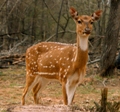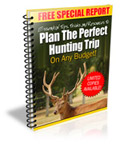Welcome to bow hunting Guide
Bow Hunting Roger Ragland Article
 . For a permanent link to this article, or to bookmark it for further reading, click here.
. For a permanent link to this article, or to bookmark it for further reading, click here.
You may also listen to this article by using the following controls.
Cross Bow Hunting: A Heated Debate
from: Cross bow hunting has long been a part of a bitter debate between hunters. Ultimately, the hunters should have the power to decide their own fate, within reason, that is. The problem with the cross bow hunting debate is that, for whatever reason, it is a debate that only gets more and more heated between members of the bow hunting community. Perhaps we can examine why it is that cross bow hunting, and cross bow hunters have been vilified in the sport of bow hunting.Basically, it all boils down to the opinion of some bow hunters that cross bow hunting offers its hunters an unfair advantage over traditional bow hunters. The blend of bow and gunstock has been a matter of contention for many years, in the hunting community, and it seems to get worse every year. The real question to be addressed seems to be whether the cross bow is a bow of a different type or a hybrid that should be used during gun season.
The state of Ohio has allowed crossbows to be used during bow season since 1976, which certainly provides ample time to study trends and results of cross bow hunting being allowed during bow season. For that reason statistics have been complied using Ohio statistics. Current information from the Ohio Department of Wildlife (ODOW) for the year 2001 states:
• 155,000 registered hunters participated in bow season hunting.
• 70,000 of them practiced crossbow hunting exclusively.
• 55,000 registered hunters used a vertical bow
• 30,000 registered hunters used both a vertical bow practiced cross bow hunting.
Senior Citizen Hunters who received free hunting licenses:
• 4,000 used a cross bow
• 1,000 used a vertical bow
• 1,000 used both
The success rates were identical for both cross bow hunters and vertical bow hunters at 14% each.
An independent source took the numbers above and compared them, and his result was that the numbers did not reflect the actual percentages for cross bow hunting and other bow hunting. The actual percentage according to the independent source was a 23% success rate for cross bow hunting and a 21% success rate for bow hunters. This seems quite realistic, and appears to be accurate and indicate that crossbows are more effective than other bows, but not by enough to warrant all the controversy surrounding the issue. So, the debate seems to be, by and large, another false debate.









